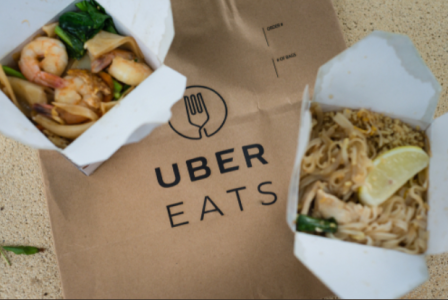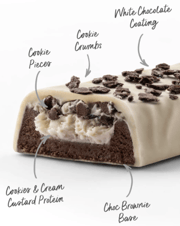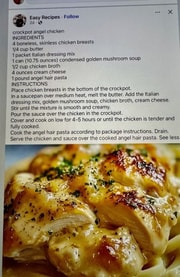Has your favourite meal become more expensive? Delivery apps could be to blame!
In recent years, we've seen more and more people embracing the convenience of ordering meals through delivery apps like Uber Eats and Menulog. However, a new report has revealed an unintended consequence – customers are paying more for their favourite meals because restaurants and food chains are increasing their prices to offset the fees charged by these platforms.
According to an investigation by The Age, services such as Uber Eats and Menulog can charge a commission of up to 30% per order—and that's on top of the delivery and service fees already paid by customers! In response to the high fees, both small establishments and large multinational restaurant chains have opted to increase their prices on delivery apps.

Take, for instance, the popular Greek food eatery Zeus Street Greek. The Spartan Bowl, a mouth-watering hit among customers, costs $22 in-store. However, if you were to order it from Uber Eats or Menulog, you'd be shelling out an extra $10! Similarly, a lamb pita wrap, which normally costs $15.50, rises to a whopping $21 if ordered on a delivery app.
Large fast-food chains have also jumped on board, adjusting their prices to counterbalance delivery app costs. A KFC Original Recipe burger is now an extra $1.50 more expensive on Uber Eats and Menulog, while a six-pack of McDonald's chicken nuggets will cost you $8.55 on Uber Eats and just $7.50 in-store.
Addressing this issue, Ramon Castillo, Zeus Street Greek's Chief Marketing Officer, told The Age that the price difference was necessary, stating it was '100 per cent in place to offset the fees charged by third-party delivery companies.'
He added, 'The ability for our franchisees to absorb these fees in addition to our other operational costs is simply not sustainable.'
It is not only restaurants that are adjusting their prices. Woolworths supermarket has been found to be charging more for groceries on Uber Eats compared to buying them in-store. However, they maintain the same prices on their new delivery app Milkrun, which they recently acquired. In contrast, Coles has kept its product prices consistent both online and in-store.
Reacting to these findings, an Uber Eats spokesperson told 7NEWS.com.au: 'Restaurants choose to partner with Uber Eats in different ways and we're proud to provide this flexibility and control to thousands of Australian small businesses nationwide.' They also stated that it was up to business owners to decide 'which items ... to list and how they price those items’.
Food delivery apps offer convenience, making them a lifesaver for busy individuals. With just a few taps on a smartphone, you can order fresh ingredients or your favourite meals from any restaurant, saving you the time and effort of going out to pick up the necessary items.
Many delivery apps provide loyalty programs and discount codes, allowing customers to enjoy meal discounts when ordering through their platforms.
Additionally, these apps serve as a marketing channel for restaurants, exposing them to potential customers who may have otherwise been unaware of their existence.
One significant downside of food delivery apps is the high commission fees they charge to restaurants, which are often passed on to consumers. This often leads to higher prices compared to dining in at the restaurant itself.
Customers also need to be aware of the additional costs involved, such as convenience fees, delivery fees, and service fees, which can significantly increase the final amount paid.
Consumers need to weigh the convenience against the cost when deciding whether to use food delivery apps.

As we consider the advantages and disadvantages of food delivery apps, it's crucial to be mindful of the price discrepancies they may entail. Convenience can sometimes come at a cost.
So, here's a question for you: How do you balance the convenience of food delivery apps with the potential extra expenses? Do you prefer ordering directly from restaurants, picking up your food, or enjoying a delightful outing with friends and loved ones in person?
Share your thoughts and experiences with us as we navigate the realm of dining options. Remember, there's nothing quite like relishing a delectable meal in the company of good friends, even if it means embracing the joys of traditional, in-person dining!
According to an investigation by The Age, services such as Uber Eats and Menulog can charge a commission of up to 30% per order—and that's on top of the delivery and service fees already paid by customers! In response to the high fees, both small establishments and large multinational restaurant chains have opted to increase their prices on delivery apps.

To compensate for losses incurred from utilising third-party delivery services, restaurants are implementing markups of up to $10 per item on their food. Image by Shutterstock
Take, for instance, the popular Greek food eatery Zeus Street Greek. The Spartan Bowl, a mouth-watering hit among customers, costs $22 in-store. However, if you were to order it from Uber Eats or Menulog, you'd be shelling out an extra $10! Similarly, a lamb pita wrap, which normally costs $15.50, rises to a whopping $21 if ordered on a delivery app.
Large fast-food chains have also jumped on board, adjusting their prices to counterbalance delivery app costs. A KFC Original Recipe burger is now an extra $1.50 more expensive on Uber Eats and Menulog, while a six-pack of McDonald's chicken nuggets will cost you $8.55 on Uber Eats and just $7.50 in-store.
Addressing this issue, Ramon Castillo, Zeus Street Greek's Chief Marketing Officer, told The Age that the price difference was necessary, stating it was '100 per cent in place to offset the fees charged by third-party delivery companies.'
He added, 'The ability for our franchisees to absorb these fees in addition to our other operational costs is simply not sustainable.'
It is not only restaurants that are adjusting their prices. Woolworths supermarket has been found to be charging more for groceries on Uber Eats compared to buying them in-store. However, they maintain the same prices on their new delivery app Milkrun, which they recently acquired. In contrast, Coles has kept its product prices consistent both online and in-store.
Reacting to these findings, an Uber Eats spokesperson told 7NEWS.com.au: 'Restaurants choose to partner with Uber Eats in different ways and we're proud to provide this flexibility and control to thousands of Australian small businesses nationwide.' They also stated that it was up to business owners to decide 'which items ... to list and how they price those items’.
What Are The Advantages and Disadvantages of Using Food Delivery Apps?
Advantages of Food Delivery Apps:
Food delivery apps offer convenience, making them a lifesaver for busy individuals. With just a few taps on a smartphone, you can order fresh ingredients or your favourite meals from any restaurant, saving you the time and effort of going out to pick up the necessary items.
Many delivery apps provide loyalty programs and discount codes, allowing customers to enjoy meal discounts when ordering through their platforms.
Additionally, these apps serve as a marketing channel for restaurants, exposing them to potential customers who may have otherwise been unaware of their existence.
Disadvantages of Food Delivery Apps:
One significant downside of food delivery apps is the high commission fees they charge to restaurants, which are often passed on to consumers. This often leads to higher prices compared to dining in at the restaurant itself.
Customers also need to be aware of the additional costs involved, such as convenience fees, delivery fees, and service fees, which can significantly increase the final amount paid.
Consumers need to weigh the convenience against the cost when deciding whether to use food delivery apps.
Key Takeaways
- Restaurants and food chains are increasing prices on delivery apps due to costly rates and fees.
- Services such as Uber Eats and Menulog charge a commission of up to 30% per order, forcing businesses to increase their prices.
- Large fast food chains like KFC and McDonald’s have also raised their prices to recoup costs on delivery apps.
- Uber Eats states that it is up to business owners to decide how they price items and that they are proud to provide flexibility to thousands of Australian small businesses.
As we consider the advantages and disadvantages of food delivery apps, it's crucial to be mindful of the price discrepancies they may entail. Convenience can sometimes come at a cost.
So, here's a question for you: How do you balance the convenience of food delivery apps with the potential extra expenses? Do you prefer ordering directly from restaurants, picking up your food, or enjoying a delightful outing with friends and loved ones in person?
Share your thoughts and experiences with us as we navigate the realm of dining options. Remember, there's nothing quite like relishing a delectable meal in the company of good friends, even if it means embracing the joys of traditional, in-person dining!







